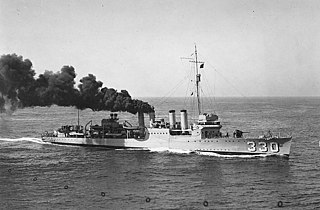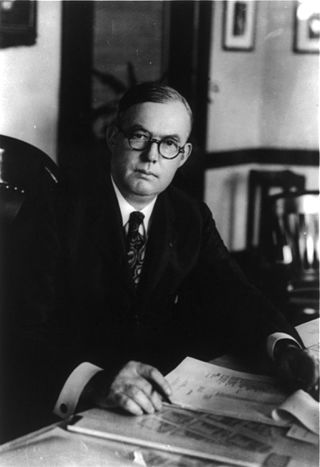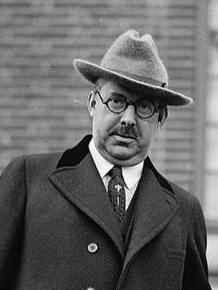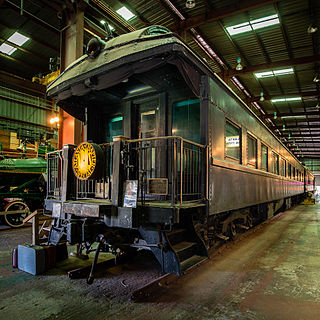
Warren Gamaliel Harding was the 29th president of the United States, serving from 1921 until his death in 1923. A member of the Republican Party, he was one of the most popular sitting U.S. presidents while in office. After his death, a number of scandals were exposed, including Teapot Dome, as well as an extramarital affair with Nan Britton, which tarnished his reputation.

The Teapot Dome scandal was a political corruption scandal in the United States involving the administration of President Warren G. Harding. It centered on Interior Secretary Albert Bacon Fall, who had leased Navy petroleum reserves at Teapot Dome in Wyoming, as well as two locations in California, to private oil companies at low rates without competitive bidding. The leases were the subject of an investigation by Senator Thomas J. Walsh. Convicted of accepting bribes from the oil companies, Fall became the first presidential cabinet member to go to prison, but no one was convicted of paying the bribes.

Scott Cardelle Bone was the fourth Territorial Governor of Alaska, serving from 1921 to 1925. A Republican, he was appointed by President Warren G. Harding. He is perhaps best known for making the decision to use dog sleds to transport diphtheria antitoxin 674 miles rather than use a plane in the now-famous 1925 Serum Run, from which the Iditarod Trail Sled Dog Race stems.

Florence Mabel Harding was the first lady of the United States from 1921 until her husband's death in 1923 as the wife of President Warren G. Harding.

The Ohio Gang was a gang of politicians and industry leaders closely surrounding Warren G. Harding, the 29th president of the United States. Many of these individuals came into Harding's personal orbit during his tenure as a state-level politician in Ohio, hence the name.

Charles Elmer Sawyer, was a homeopathic physician who was the longtime personal doctor to U.S. President Warren G. Harding and First Lady Florence Kling Harding. Sawyer is often blamed in the matter of Harding's death in 1923.

The second USS Hull (DD-330) was a Clemson-class destroyer in the United States Navy following World War I. She was named for Isaac Hull.

Warren G. Harding's tenure as the 29th president of the United States lasted from March 4, 1921, until his death on August 2, 1923. Harding presided over the country in the aftermath of World War I. A Republican from Ohio, Harding held office during a period in American political history from the mid-1890s to 1932 that was generally dominated by his party. He died of an apparent heart attack and was succeeded by Vice President Calvin Coolidge.

Charles Robert Forbes was a Scottish-American politician and military officer. Appointed the first director of the Veterans' Bureau by President Warren G. Harding on August 9, 1921, Forbes served until February 28, 1923. His tenure was characterized by corruption and scandal.

Michael Joseph Conroy was the second Mayor of Anchorage, Alaska, serving from 1923 to 1924.

Jesse W. Smith was a member of President Warren G. Harding's Ohio Gang. He was born and raised in Washington Court House, Ohio, where he became a friend of Harry M. Daugherty. There, Daugherty helped him to become the successful owner of a department store. Smith became Daugherty's gofer during the 1920 campaign. There was always a question about the nature of the relationship between Daugherty and Smith.

The Superb was used as U.S. President Warren G. Harding's personal Pullman railroad car in a cross-country tour in 1923. After Harding's death, the car returned his body from San Francisco to Washington, D.C. Built in 1911, it is the second-oldest steel private car in existence. It had been used by Woodrow Wilson. In 1926 it was temporarily renamed Pope Pius XI for the Cardinal's Train from New York City to Chicago. Later it was an office car for the Charleston and West Carolina, Atlantic Coast Line and Seaboard Coast Line railroads.

The Mears Memorial Bridge is a truss bridge on the Alaska Railroad, completed in 1923. The bridge spans the Tanana River at Nenana and at 700-foot-long (210 m), it is among the largest simple truss-type bridges in the world.
A death in office is the death of a person who was incumbent of an office-position until the time of death. Such deaths have been usually due to natural causes, but they are also caused by accidents, suicides, disease and assassinations.

The following events occurred in July 1923:

The Harding Railroad Car is a historically significant Pullman railroad passenger car located at Pioneer Park in Fairbanks, Alaska. Also called Denali, and designated with equipment number X-336 by the Alaska Railroad, the car was one of three used to carry a delegation that included President Warren G. Harding in 1923 to the Mears Memorial Bridge for a ceremony marking completion of the railroad between Fairbanks and Seward. The car was purchased by the Alaska Railroad in 1923 from the Great Northern Railroad, and was used in its service until 1945. At the urging of the Fairbanks "igloo" (chapter) of the Pioneers of Alaska, the car was restored in 1959–60 and given to the city of Fairbanks. It was placed in Alaskaland in 1967, created to mark the centennial of the Alaska Purchase. It was used for some years as the park's visitor center.
Warren G. Harding was inaugurated as the 29th president of the United States on March 4, 1921, and served as president until his death on August 2, 1923, 881 days later. During his presidency, he organized international disarmament agreements, addressed major labor disputes, enacted legislation and regulations pertaining to veterans' rights, and traveled west to visit Alaska.

George Tryon Harding, known as Tryon Harding, was an American physician and businessman who is best known as the father of Warren G. Harding, the 29th president of the United States. Harding was named in honor of his grandfather; however, he did not use "Jr." or the suffix "II" in his adult life. He was the first presidential father to outlive his son, and the second presidential father to live through his son's presidency. In his biography of Warren G. Harding, Charles L. Mee describes Tryon Harding as "a small, idle, shiftless, impractical, lazy, daydreaming, catnapping fellow whose eye was always on the main chance".

















